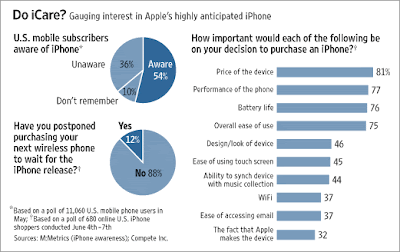So, do you think that if you do not vote your shares when you receive those shareholder notices in the mail that those potential votes just do not get cast? Think again.
The Wall St. Journal reported Wednesday:
Investors who are growing increasingly vocal about the performance of executives and directors may soon get a boost, as the role of shareholder votes cast by brokers comes under closer scrutiny.
In routine matters at annual meetings, such as the election of uncontested directors, shares not voted by shareholders can instead be voted by the brokers who hold those shares, any way they want. That’s created controversy in some votes recently, and has gained the attention of regulators, some of which are pushing for a change.
ROCKING THE VOTE
• The Issue: Brokers can vote the shares held in client accounts on regular director elections if the client hasn’t told them how to vote.
• Twist: Some investors in CVS (CVS) Caremark say the “broker vote” unfairly swung the election of a director in a recent contest.
• What’s Next: The SEC is deciding whether to take on a NYSE rule change that would ban such voting.
This question arose most recently in the case of Minnesota businessman Roger Headrick, who was re-elected to the board of CVS Caremark Corp. last month after receiving 606 million votes, or 57.2% of the total cast. CtW Investment Group, an arm of Change to Win, a coalition of labor unions, says the contest was swung by 264 million “phantom” votes cast by brokers who hadn’t received specific instructions from their clients.
Exclude those votes, CtW says, and Mr. Headrick loses, having won only 43% of the votes.
Carolyn Castel, a spokeswoman for CVS Caremark, says the 264-million-vote figure is “potentially correct,” though she notes that CtW assumes all the broker votes went for Mr. Headrick. “This is pure conjecture,” she says, declining to be more specific.
Mr. Headrick didn’t return calls seeking comment.
Brokers generally vote for management, partly, they say, because if clients wanted them to oppose management they would let them know. Shareholder votes rarely mattered in the past since most proposals needed only a plurality to pass. In the U.S., as much as 80% of stocks are held in accounts at brokerage houses.
Complaints about the system go back for years. In 2003, the proxy advisory firm Institutional Shareholder Services said that the system was hurting investors’ ability to express dissatisfaction. At Tyco International Ltd.(TYC) and Sprint, now Sprint Nextel Corp. (S), ISS said, unhappiness with the companies’ boards was “watered down by broker votes.”
In 2004, the issue surfaced during the re-election vote of then-Walt Disney Co. (DIS) Chairman and CEO Michael Eisner, when 43% of voters opted to withhold support; he was then pressured to resign. The Council of Institutional Investors, which lobbies for major investors said excluding broker votes, more than 50% of the votes cast would have been withheld for Mr. Eisner.
NYSE’s Proposal
Already, NYSE Euronext’s New York Stock Exchange (NYX) has proposed amending the broker-vote rule. It would redefine director elections as “non routine,” no longer allowing brokers to vote shares without instruction. At the same time, the Securities and Exchange Commission is reviewing the entire voting system, from allowing companies to send proxies to shareholders over the Internet to allowing shareholders to nominate their own directors on corporate ballots. The NYSE rule change would require SEC approval.
Some business groups warn eliminating broker votes may raise election costs for companies, because of the extra effort needed to get shareholders to vote. Some firms say they will accept the change if they can communicate directly with these investors; currently, they have to go through brokerage houses.
Other groups have advocated other changes, such as having brokers vote uninstructed shares in proportion to those cast by individual or “retail” investors, generally matching the totals from their own individual clients who give instructions. In this year’s proxy season, Goldman Sachs Group Inc., Merrill Lynch & Co., and Morgan Stanley did just that. Charles Schwab Corp. has been following that practice since 2005.
‘Stuffing the Ballot Box’?
Now, the close CVS election has spurred investor groups, including the Council of Institutional Investors, to push for changes. In a letter to NYSE Regulation last year, the exchange’s regulatory arm, the council said counting broker votes is “akin to stuffing the ballot box.”
CVS Caremark says the 264 million shares voted by brokers were split for and against Mr. Headrick, but it won’t divulge further details. Companies aren’t required to calculate how the vote would have turned out if the broker votes didn’t count, nor are they required to break out that category into votes for and against. The treasurer for North Carolina, Richard Moore, the sole trustee of the state’s pension fund, which owns $2 million of CVS stock, wrote a letter last week to the chairman of CVS Caremark asking him to disclose how many uninstructed broker votes were included in Mr. Headrick’s ‘for’ category.
CtW, originally a Caremark investor, has been battling the new company for a while. This year it sought to rally shareholders to vote against CVS’s $27 billion acquisition of Caremark, saying the board should have negotiated with another company that made an offer.
CtW also opposes Mr. Headrick because he was on the Caremark board at the time of the merger. Union pension funds affiliated with CtW own an estimated 12 million shares in the new company, less than 1% of the total.
Article originally appeared Here.
